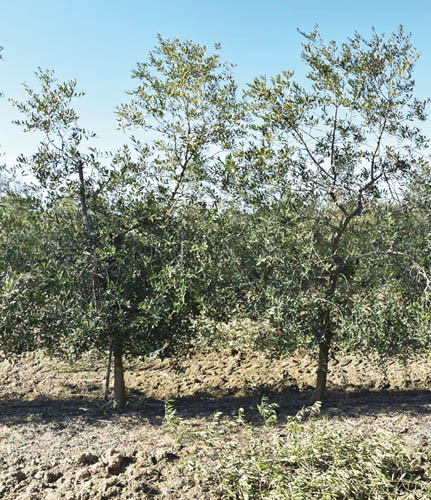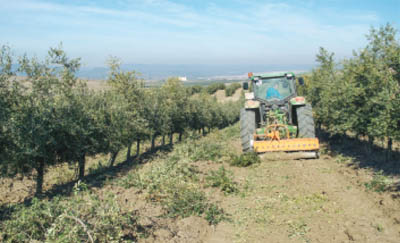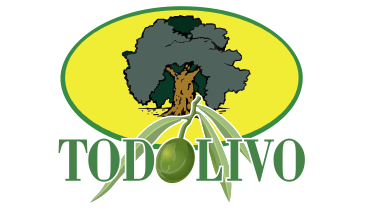At Todolivo we carry out a manual and natural pruning, inspired by traditional olive tree pruning, which is extremely productive and which is implemented in an easy and economical way.
With the natural pruning we remove the old and unproductive parts and thin the thick trees, letting the sunlight reach the pruned branches in each row and ensuring that the productive foliage created grows from the trunk outwards, that the branches get enough sunlight and capture solar radiation in an efficient way, which helps us achieve greater productivity and higher fat yield levels every year.
-
Main functions
- Creating the structure of the olive tree in mono-conical and/or false palmate shape.
- Keeping the hedge productive and flexible.
- Helping sunlight reach the trees.
- Facilitating harvesting.
Methodology
Pruning is carried out annually and it consists of two different parts:
The “thinning-out”, carried out with chainsaws or shears, entails annually removing shoots or intertwined branches, thinning the trees and cutting and renovating high branches, if any. Low branches can also be pruned with mechanical blades attached to the tractor.
The “pruning of low branches”, which is carried out using the aforementioned tools or using blades connected to the tractor’s hydraulic system which “shave” low branches at 50 cm above ground level.Nutrition using pruning waste
Pruning waste is placed in the centre of the paths between the rows so that, once the pruning is finished, they can be crushed and incorporated into the soil as organic matter.
R&D&i
Ten years ago we started a fully mechanised pruning programme in the Pedro Abad test field (topping and lateral pruning with blades) which has allowed us to learn all about its performance.
-

Pruning service
At Todolivo we have the following:
- Expert technicians in hedge olive grove pruning who will train and advise the personnel of your estate on all that is required.
- All the equipment necessary to carry out the pruning (chainsaws, mechanical blades, crushers, binders, etc.)
-
MANUAL AND NATURAL PRUNING SYSTEM
Carried out in olive grove in hedge, it enhances environmental sustainability, helping make the carbon footprint balance positive in this cultivation system.
-

-
Olive trees have the ability to capture carbon dioxide (CO2) in the atmosphere (a harmful gas in the atmosphere causing the greenhouse effect) and to temporarily hold it in their trunks and branches.
With this system, pruning waste is placed in the centre of the paths between the rows of trees so they can be crushed and incorporated into the soil as organic matter, which, in addition to provide the soil with nutrients, fixes the carbon in the pruned branches to the soil in a stable way, thus making the carbon footprint balance (the difference between the carbon dioxide captured and the carbon dioxide released into the atmosphere by this crop) extremely positive.
-


The research team from the University of Córdoba, led by Professor Luis López Bellido, highlights in an important research on carbon footprint the great potential of this kind of plantations as a carbon sink and in the mitigation of greenhouse gases.
The following summary table shows how the hedge olive grove is the olive tree cultivation system with the best carbon footprint balance, with 4.107 kg of carbon per hectare and year.

